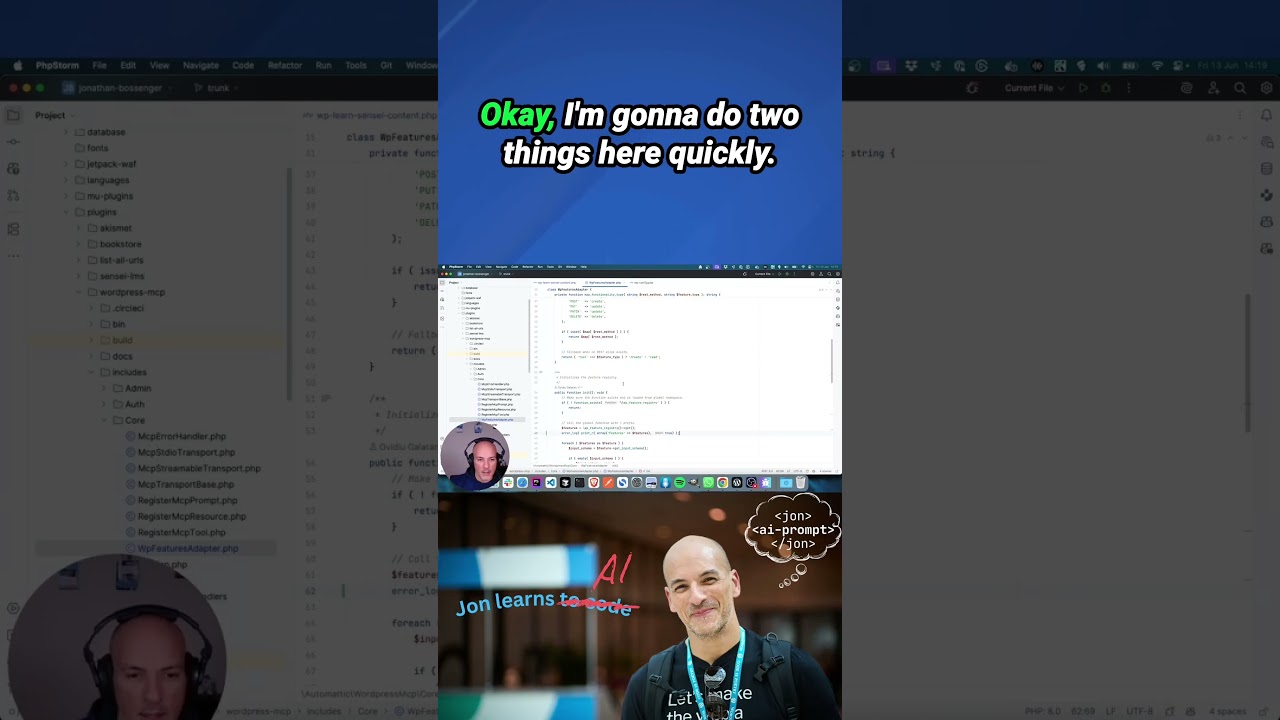Blog
When Debugging Feels Like a Puzzle #ai #coding #wordpress

The Art of Debugging: Turning Code Challenges into Puzzles
Debugging is often viewed as a daunting task, striking fear into the hearts of even seasoned developers. Yet, when approached with the right mindset, it can transform into an engaging puzzle that sharpens your coding skills and enhances your understanding of programming. In this blog post, we’ll explore strategies to make debugging less intimidating and more enjoyable, turning it into a rewarding experience.
Understanding Debugging
Before diving into techniques, let’s clarify what debugging entails. Debugging is the process of identifying, analyzing, and fixing bugs or errors in your code. A bug can stem from a variety of sources, from syntax errors to logical fallacies in algorithms. Regardless of the origin, the goal remains the same: to ensure that your code runs smoothly and efficiently.
The Mindset Shift: From Frustration to Curiosity
One of the biggest hurdles in debugging is the emotional response it elicits. Often, developers feel overwhelmed and frustrated when encountering errors, leading to a vicious cycle of confusion and anxiety. To counteract this, it’s essential to adopt a curious mindset.
When a bug arises, ask yourself:
- What is this error telling me?
- How does this code work on a fundamental level?
- What are some alternative approaches I can explore?
This shift in perspective can turn frustration into fascination, transforming the debugging process into an intellectual challenge rather than a source of stress.
Step-by-Step Approach to Debugging
The following structured approach can guide you through the debugging process, making it feel less like a chore and more like solving a mystery.
1. Reproduce the Issue
Before investigating further, confirm the bug’s reproducibility. Take note of the steps leading to the error and try to replicate the issue consistently. Understanding when and why an error occurs is crucial in pinpointing its cause.
2. Read Error Messages Carefully
Error messages can often feel cryptic. However, they contain valuable clues about the nature of the bug. Take time to read these messages thoroughly and look them up if necessary. Many developers overlook this detail, missing out on crucial hints.
3. Utilize Print Statements or Logs
Sometimes, the best way to understand what’s happening in your code is to see it in action. By strategically placing print statements or using logging libraries, you can gain insight into the flow of your program. This helps to verify whether certain conditions are met or how data is being processed at different stages.
4. Isolate the Problem
Narrow down potential problem areas by isolating code sections. You can comment out parts of your code or use test cases to check specific functionalities. This helps to identify whether the issue is localized to a specific segment or if it’s a broader systemic problem.
Collaborative Debugging: The Power of Teamwork
Debugging doesn’t have to be a solitary endeavor. Collaborating with others can lead to fresh perspectives and solutions. Sharing your thought process with a colleague or a coding community can uncover insights you hadn’t considered. Sometimes, discussing a problem out loud can clarify your understanding and reveal overlooked details.
Leveraging Modern Tools
Today’s coding landscape is rich with tools designed to facilitate debugging. Integrated Development Environments (IDEs) often come equipped with sophisticated debugging features such as breakpoints, step-through execution, and variable watches. Familiarizing yourself with these tools can significantly streamline the debugging process.
1. Using Breakpoints
Breakpoints allow you to pause program execution at critical points, enabling you to inspect the current state of variables and control flow. This is invaluable when trying to understand where your code diverges from expected behavior.
2. Visual Debugging
Many IDEs offer visual debugging options that provide a graphical representation of code execution. This can make it easier to comprehend complex logic flows or identify errors in conditional statements.
3. Static Analyzers
Static analysis tools automatically check for code quality issues and potential bugs before you even run your program. These tools can help catch common errors early on, saving you time in the debugging process.
Enhancing Your Debugging Skills
Just like any other skill, debugging improves with practice. Here are some tips for enhancing your abilities:
1. Learn from Mistakes
Every bug fixed is an opportunity for learning. Take notes on frequent issues you encounter and how you resolved them. This reference can be a valuable tool for future debugging tasks.
2. Engage in Code Reviews
Participating in code review sessions, either as a reviewer or reviewee, exposes you to different coding styles and debugging approaches. This collaborative effort helps all team members grow and learn from one another.
3. Take Breaks
If you find yourself stuck on a particularly challenging bug, stepping away for a moment can work wonders. A fresh perspective gained after a break can often reveal the solution you’ve been searching for.
Building a Debugging Culture
Creating a culture that embraces debugging as part of the development process is essential. Encourage teams to document their debugging experiences, share tips, and celebrate successes. This not only fosters collaboration but also enhances team morale and collective problem-solving capabilities.
Conclusion
Debugging can feel like piecing together a complex puzzle, filled with twists and turns. By shifting your mindset and applying structured approaches, debugging can transform into a captivating challenge rather than a dreaded task. With practice, collaboration, and the use of modern tools, you can master this essential skill, enhancing both your coding abilities and your enjoyment of the process. Embrace the journey of debugging—it’s a pathway to greater proficiency and innovation in coding.

